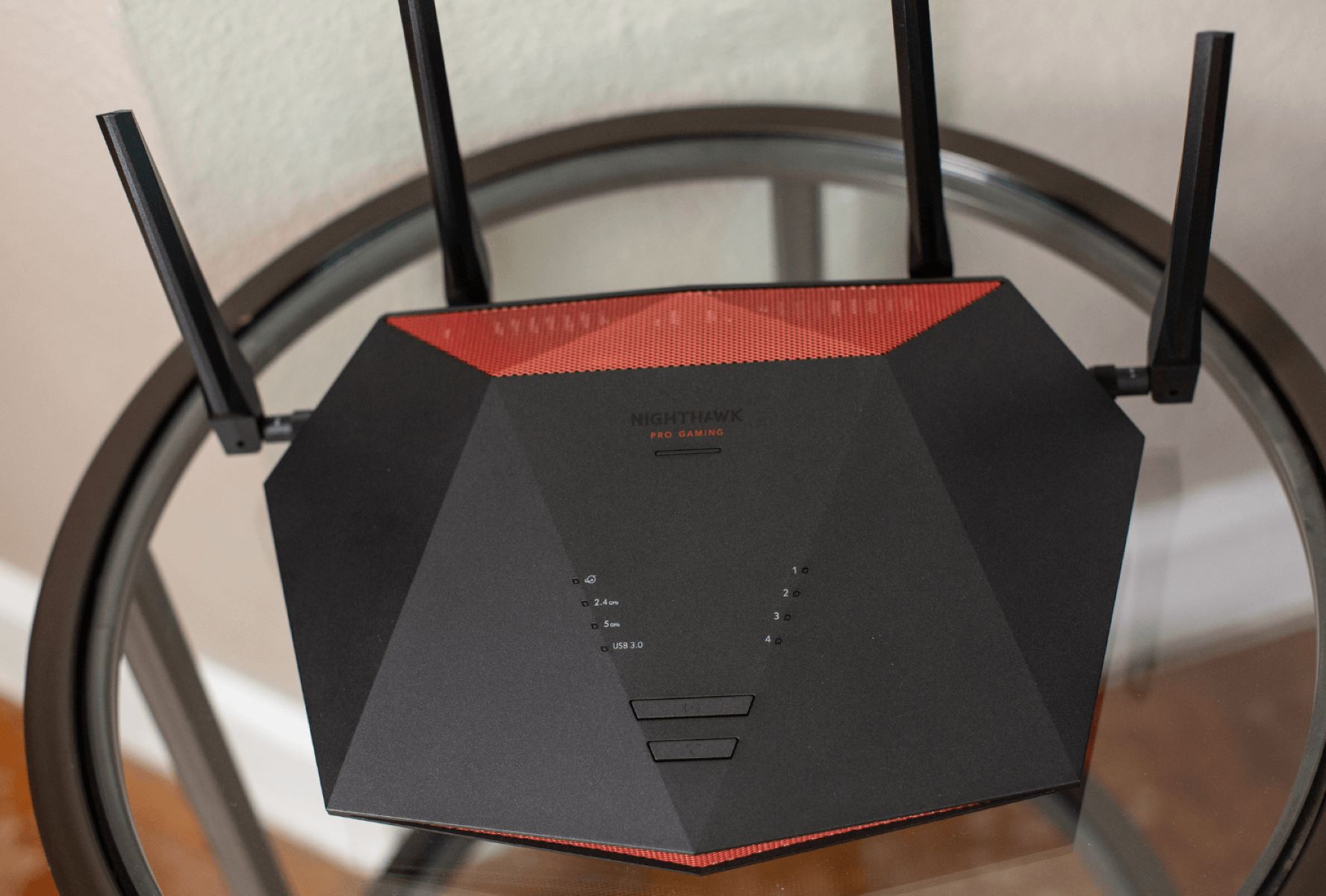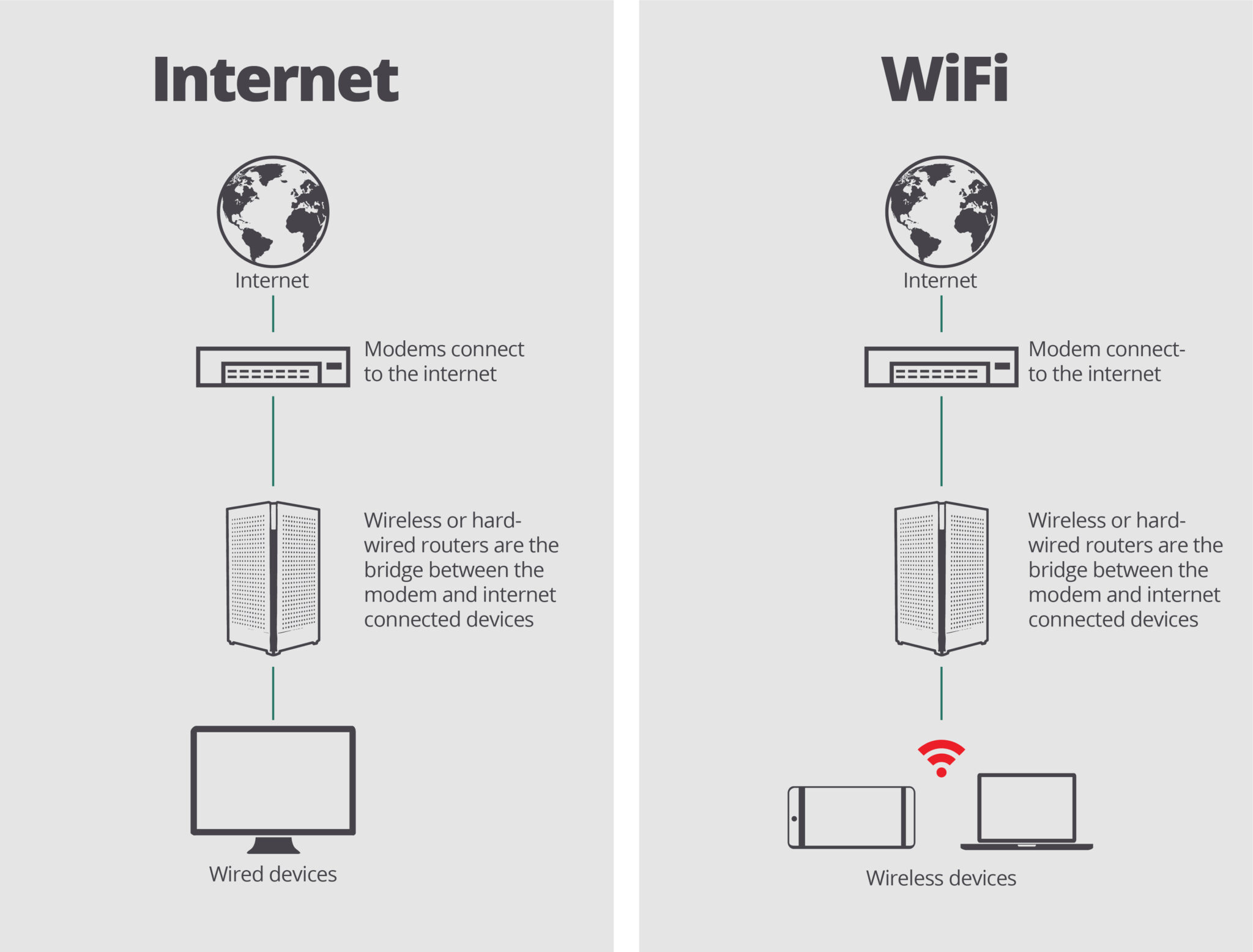Introduction
Routing protocols play a vital role in the functioning of the internet. They are responsible for enabling routers to learn and share routes, ensuring that data packets are effectively routed from source to destination across the vast network. These protocols serve as the backbone of internet communication, allowing for efficient and reliable data transmission.
Routing protocols serve as a communication mechanism between routers, helping them exchange information about network topology and available routes. Through this exchange, routers can make informed decisions about the optimal path to forward data packets. The selection of the appropriate routing protocol depends on factors such as network size, complexity, scalability, and requirements.
The choice of routing protocol significantly impacts the overall performance, stability, and scalability of the network. Different routing protocols provide varying levels of efficiency, robustness, and adaptability. It is essential for routers on the internet to utilize routing protocols that can handle the high demand and dynamic nature of internet traffic.
This article will provide an overview of some of the main routing protocols used by routers on the internet to learn and share routes. We will explore the key features, advantages, and use cases of each protocol, as well as their interoperability and relationship with other protocols.
Understanding these routing protocols is crucial as they form the foundation for effective network communication, allowing for seamless data transfer and optimal utilization of network resources. Join us as we delve into the world of routing protocols and their fundamental role in facilitating internet connectivity.
Routing in the Internet
Routing is a fundamental process in the internet architecture that enables data packets to travel from their source to a specified destination. The internet consists of a vast interconnected network of routers that work together to ensure that data is efficiently routed across different networks and subnetworks.
When a device sends a data packet, the packet contains the source and destination addresses. The routing process takes place at each router the packet encounters along its journey. The router examines the destination address and utilizes routing protocols to determine the best path for delivering the packet to its intended recipient.
Routing algorithms consider factors such as network congestion, available bandwidth, and link reliability to calculate the optimal route. These algorithms take into account the current state of the network and make dynamic decisions to ensure efficient packet delivery.
Routing in the internet is typically based on a hierarchical structure. At the top level of the hierarchy are the backbone routers, which handle high-speed, long-distance connections between networks. These backbone routers communicate with regional routers, which connect smaller networks within a specific geographic area. Finally, access routers connect individual devices or local area networks (LANs) to the wider internet.
The routing process involves the exchange of routing information between routers. Routing protocols allow routers to learn about available routes, update their routing tables, and share this information with other routers. By exchanging this information, routers can build a comprehensive view of the network topology and make informed forwarding decisions.
Effective routing in the internet is crucial for ensuring reliable and efficient data transmission. It enables data packets to navigate through a complex network, finding the fastest and most reliable path to their destination. Without routing, the internet would be a chaotic jumble of disconnected devices, making it impossible to access websites, send emails, or engage in any online activities.
As the internet continues to grow and evolve, routing protocols and algorithms constantly adapt to meet the changing requirements of network communication. This ensures that data can flow seamlessly between devices and networks, supporting the interconnected nature of the modern internet.
Importance of Routing Protocols
Routing protocols play a crucial role in facilitating efficient and reliable communication within computer networks. These protocols enable routers to learn about available routes, make informed forwarding decisions, and adapt to changes in network conditions. The importance of routing protocols can be summarized in the following key points:
1. Optimal Packet Routing: Routing protocols ensure that data packets are correctly and efficiently routed from source to destination. By exchanging routing information, routers can determine the best path for each packet, considering factors such as network congestion, link reliability, and available bandwidth. This optimization helps to minimize delays, reduce packet loss, and maximize network performance.
2. Scalability: With the continuous growth of the internet and the increasing number of connected devices, scalability is a critical consideration. Routing protocols enable networks to scale by efficiently distributing routing information and adapting to changes in network topology. They allow routers to dynamically update their routing tables, accommodate new network connections, and handle large amounts of traffic while maintaining optimal performance.
3. Fault Tolerance and Redundancy: Routing protocols provide mechanisms for ensuring fault tolerance and redundancy within a network. If a link or router fails, routing protocols can quickly identify alternative paths and reroute traffic to avoid disruption. Redundant routes and backup links can be established, allowing for seamless data transmission even in the presence of failures.
4. Load Balancing: Routing protocols enable load balancing across multiple paths, distributing network traffic evenly and optimizing resource utilization. By analyzing link conditions and available bandwidth, routers can intelligently distribute packets across different routes, preventing congestion and maximizing network capacity.
5. Dynamic Adaptability: Network conditions are dynamic, with constantly changing link states, congestion levels, and availability of routes. Routing protocols continuously monitor and adapt to these changes, providing routers with up-to-date information to make informed routing decisions. This adaptability ensures that the network can quickly adjust to fluctuations in traffic and maintain optimal performance.
Overall, routing protocols are essential for the proper functioning of computer networks, enabling efficient, scalable, fault-tolerant, and adaptive routing. They form the foundation of internet communication, ensuring that data packets are delivered accurately and efficiently to their intended destinations.
Overview of Different Routing Protocols
There are several routing protocols used in computer networks, each with its own characteristics, advantages, and use cases. Let’s take a brief look at some of the most commonly used routing protocols:
1. Routing Information Protocol (RIP): RIP is a distance-vector routing protocol that utilizes hop count as the metric for determining the best path. It is simple to configure and suitable for small to medium-sized networks. However, RIP has limitations in scalability and convergence time, making it less suitable for larger networks or networks with frequent topology changes.
2. Open Shortest Path First (OSPF): OSPF is a link-state routing protocol that calculates the shortest path using the Dijkstra algorithm. It is highly scalable and provides fast convergence. OSPF is commonly used in larger networks, such as enterprise networks or autonomous systems, where scalability and flexibility are key requirements.
3. Border Gateway Protocol (BGP): BGP is an exterior gateway protocol used for routing between autonomous systems (ASes) in the internet. It is a path-vector protocol that takes into account policies and attributes to make routing decisions. BGP is highly scalable and provides fine-grained control over routing policies, making it suitable for service providers and large-scale networks.
4. Intermediate System to Intermediate System (IS-IS): IS-IS is a link-state routing protocol that is similar to OSPF and is commonly used in larger networks. It operates at Layer 2, making it ideal for routing within a single network or campus environment. IS-IS is highly scalable and supports fast convergence, making it suitable for complex networks.
5. Enhanced Interior Gateway Routing Protocol (EIGRP): EIGRP is a hybrid routing protocol that combines aspects of both distance-vector and link-state protocols. It uses bandwidth, delay, reliability, and other factors to calculate the best path. EIGRP is efficient and provides fast convergence and advanced features like load balancing and route summarization.
Each of these routing protocols has its own advantages and use cases. The choice of protocol depends on factors such as the size and complexity of the network, scalability requirements, convergence time, and need for policy-based routing. It is important to carefully evaluate these factors and choose the most appropriate protocol for a given network environment.
RIP (Routing Information Protocol)
The Routing Information Protocol (RIP) is one of the oldest and simplest distance-vector routing protocols used in computer networks. Developed in the early days of the internet, RIP operates by exchanging routing information between routers based on the number of hops to reach a destination network.
RIP uses hop count as its metric, where each router counts as one hop. The maximum hop count is limited to 15, which means that RIP is not suitable for networks with a larger diameter or more than 15 hops. RIP sends its routing table to directly connected routers at regular intervals, allowing routers to update their own routing tables accordingly. RIP uses a split-horizon mechanism to prevent routing loops, where a router does not advertise routes back to the neighbor from which it learned them.
Although RIP is a simple and easy-to-configure routing protocol, it has some limitations. One significant limitation is its slow convergence time. When a network topology changes, RIP takes time to adjust as routers need to wait for the routing table updates. This delay can lead to suboptimal routing and possible network instability during convergence. Additionally, RIP does not consider factors such as network congestion or available bandwidth when making routing decisions, which can negatively impact network performance.
RIP is primarily suitable for small to medium-sized networks with a relatively stable topology. It is commonly used in home networks or small office networks where simplicity and ease of configuration are more important than advanced features. RIP is also often used as a backup or secondary routing protocol in networks where other protocols are primarily employed.
Despite its limitations, RIP can still serve its purpose effectively in the appropriate network environments. Its simplicity makes it a popular choice for entry-level networking and learning purposes. Additionally, RIP can still be useful in networks where the topology is relatively stable and network convergence time is not critical.
In summary, RIP is a basic distance-vector routing protocol that uses hop count as its metric. While it may have limitations in scalability, convergence time, and routing efficiency, it remains a viable option for small networks or as a secondary routing protocol. Understanding the characteristics and limitations of RIP is crucial when determining the most suitable routing protocol for a given network environment.
OSPF (Open Shortest Path First)
Open Shortest Path First (OSPF) is a link-state routing protocol that operates based on the Dijkstra algorithm to determine the shortest path for routing data packets. OSPF is widely used in larger networks, such as enterprise networks or autonomous systems, where scalability, flexibility, and fast convergence are crucial.
One of the key advantages of OSPF is its ability to scale effectively. OSPF divides the network into areas, where each area has its own OSPF database and routing calculation. This hierarchical design reduces the amount of routing information that needs to be exchanged and processed, improving efficiency and scalability. OSPF employs a robust flooding mechanism to ensure that routing updates are propagated only to relevant routers within the same area.
In OSPF, routers exchange link-state advertisements (LSAs) to build a detailed and accurate representation of the network topology. LSAs contain information about the router’s directly connected links, such as the link costs and associated network addresses. By sharing this information, routers can calculate the shortest path to a destination using the Dijkstra algorithm.
OSPF supports various features that contribute to its flexibility and adaptability. It allows for route summarization, where routers can advertise a summarized route instead of individual subnets, reducing the size of the routing table. OSPF also supports the concept of areas, allowing administrators to partition networks into smaller components for easier management and reduced routing overhead.
Another significant advantage of OSPF is its fast convergence time. When a topology change occurs, such as a link failure or addition, OSPF routers quickly recognize the change and update their routing tables accordingly. This rapid convergence ensures that network traffic is dynamically rerouted through the most optimal path, preserving network performance and stability.
OSPF is highly suited for networks with complex topologies, large numbers of routers, and high traffic volumes. It is particularly well-suited for enterprise networks, where scalability, flexibility, and fast convergence are essential. OSPF allows for efficient utilization of network resources and provides granular control over routing decisions, making it a robust choice for various network environments.
In summary, OSPF is a powerful link-state routing protocol that offers scalability, flexibility, fast convergence, and advanced features. Its hierarchical design, efficient flooding mechanism, and use of the Dijkstra algorithm contribute to its effectiveness in large networks. Understanding the capabilities and benefits of OSPF is crucial for network administrators seeking a robust routing solution for complex network environments.
BGP (Border Gateway Protocol)
Border Gateway Protocol (BGP) is an exterior gateway protocol that operates at the core of the internet. Its primary function is to enable routing between autonomous systems (ASes) and facilitate the exchange of routing information between different networks. BGP plays a critical role in maintaining the connectivity and stability of the global internet.
BGP is a path-vector protocol, meaning that it considers multiple attributes and policies when making routing decisions. These attributes, such as AS path, next-hop information, and route preference, allow routers to select the best path for forwarding traffic based on specific policies defined by network administrators. BGP is highly flexible and provides fine-grained control over how traffic flows through the network.
One of the defining features of BGP is its scalability. BGP can handle the enormous scale of the internet, as it supports the exchange of a vast number of routing updates and the maintenance of large routing tables. This scalability is achieved through the use of hierarchical routing and route aggregation techniques, reducing the amount of routing information that needs to be exchanged.
BGP also provides robust mechanisms for ensuring network stability and fault tolerance. It employs the concept of autonomous systems, where networks are organized into separate entities with their own routing policies and administration. BGP routers within an AS exchange routing information with their neighboring ASes, allowing for traffic to be routed efficiently between different organizations. In the event of a link or router failure, BGP routers quickly adapt and reroute traffic through alternative paths, maintaining network connectivity.
Another crucial aspect of BGP is its support for policy-based routing. Network administrators can define specific policies, such as preferred paths or traffic engineering rules, to influence the routing decisions made by BGP routers. These policies can be used to prioritize certain network traffic, ensure quality of service (QoS), or control the flow of data based on business requirements.
BGP is primarily used by Internet Service Providers (ISPs), large enterprises, and organizations that operate complex networks or have multiple connections to different networks. It serves as the backbone of the internet, enabling the exchange of routing information between organizations and ensuring that data packets are delivered across the global network efficiently and according to predefined policies.
In summary, BGP is a powerful and scalable protocol that enables routing between autonomous systems in the internet. Its support for fine-grained control, scalability, network stability, and policy-based routing makes it suitable for complex network environments. Understanding the capabilities and benefits of BGP is crucial for network administrators involved in managing large-scale networks and ensuring seamless connectivity in the global internet.
IS-IS (Intermediate System to Intermediate System)
Intermediate System to Intermediate System (IS-IS) is a link-state routing protocol that operates at Layer 2 of the OSI model, making it ideal for routing within a single network or campus environment. Originally developed for use in ISO’s Connectionless Network Protocol (CLNP), IS-IS has found widespread adoption in various network deployments.
IS-IS is similar to OSPF in terms of its link-state characteristics. It uses a hierarchical routing structure, dividing networks into areas to improve scalability and reduce routing overhead. Each router within an area has a copy of the area’s link-state database, allowing for efficient calculation of the shortest path using the Dijkstra algorithm.
One of the key advantages of IS-IS is its scalability. With its hierarchical design, IS-IS allows for efficient distribution of routing information within areas. This design minimizes the amount of routing information that needs to be exchanged and processed, thus enhancing the scalability of the protocol.
IS-IS also supports fast convergence, ensuring that routers quickly adapt to changes in network topology. When a link or router failure occurs, IS-IS routers efficiently compute new paths and update the routing tables, minimizing disruption to network connectivity.
IS-IS utilizes a two-level hierarchy of routers, consisting of Level 1 (L1) and Level 2 (L2) routers. L1 routers are responsible for routing within an area, ensuring efficient intra-area communication. L2 routers, on the other hand, are responsible for routing between areas, facilitating inter-area communication. This hierarchy provides flexibility in network design and allows for efficient utilization of resources.
IS-IS has been widely adopted in Service Provider networks, especially in Multi-Protocol Label Switching (MPLS) environments, where it is used to distribute MPLS labels and facilitate traffic engineering. It is also commonly used in large enterprise networks where scalability and fast convergence are crucial requirements.
IS-IS can operate with IP and non-IP protocols, making it flexible in accommodating various network technologies. Its ability to support multiple protocols allows for seamless integration with existing network infrastructures that may use different protocols.
In summary, IS-IS is a link-state routing protocol with a hierarchical design, well-suited for large networks and campus environments. Its scalability, fast convergence, and support for multi-protocol environments make it an effective choice in networks where efficient intra-area and inter-area routing is required. Understanding the capabilities of IS-IS is vital for network administrators seeking an optimal routing solution for complex network deployments.
Comparison of Routing Protocols
When choosing a routing protocol for a network, it is essential to consider the specific requirements and characteristics of the network environment. Let’s compare some key aspects of different routing protocols to understand their differences and strengths:
Scalability: OSPF and IS-IS are highly scalable routing protocols due to their hierarchical design, where networks are divided into areas. This reduces routing overhead and allows for efficient distribution of routing information. BGP, being an exterior gateway protocol, also provides scalability by supporting the routing between autonomous systems.
Convergence Time: OSPF and IS-IS offer fast convergence, allowing routers to quickly adapt to changes in network topology. RIP, however, may experience slower convergence due to the time it takes for routers to update their routing tables when a network change occurs.
Metric: RIP uses hop count as its metric, which can be limiting in larger networks. OSPF and IS-IS calculate the shortest path based on link costs, taking into account factors such as bandwidth and delay. BGP considers multiple attributes, including policies, to make routing decisions.
Use Cases: RIP is suitable for small to medium-sized networks with a relatively stable topology. OSPF and IS-IS are commonly used in larger networks, where scalability, flexibility, and fast convergence are critical. BGP is primarily utilized in inter-AS routing, making it essential for ISPs and networks with multiple connections.
Control: BGP provides fine-grained control over routing policies, allowing for precise management of traffic flow. OSPF and IS-IS also offer control through features like route summarization and areas, but BGP provides more extensive flexibility in defining routing decisions based on policies.
Protocol Operation: RIP is a distance-vector protocol that exchanges routing updates periodically. OSPF and IS-IS are link-state protocols, sharing information about network topology with neighboring routers. BGP utilizes path-vector characteristics, considering various attributes to make routing decisions.
It’s important to note that these comparisons are general in nature and guidelines based on typical use cases. The selection of the most appropriate routing protocol depends on specific network requirements, size, complexity, and policies.
Understanding the strengths and weaknesses of each routing protocol allows network administrators to make informed decisions about the protocol that best suits their network environment.
Conclusion
Routing protocols form the backbone of computer networks, facilitating efficient and reliable communication between devices and networks. Choosing the right routing protocol is crucial to ensure optimal network performance, scalability, and adaptability.
In this article, we have explored several well-known routing protocols, including RIP, OSPF, BGP, and IS-IS. Each protocol has its own characteristics, advantages, and use cases. Understanding these protocols’ features allows network administrators to make informed decisions about deploying the most suitable routing solution for their network environments.
RIP, with its simplicity and ease of configuration, is suitable for small networks where a stable topology is maintained. OSPF and IS-IS, with their hierarchical design and fast convergence capabilities, are appropriate for larger networks with complex topologies. BGP, being an exterior gateway protocol, is crucial for inter-AS routing and provides fine-grained control over routing policies.
Ultimately, the choice of routing protocol depends on factors such as network size, complexity, scalability requirements, and policies defined by the organization. No single routing protocol can fulfill all network requirements, and it is common for networks to employ a combination of protocols based on their specific needs.
It is important for network administrators to stay up-to-date with new developments, enhancements, and advancements in routing protocols. As the internet continues to evolve, routing protocols will continue to adapt to meet the changing demands of network communication.
By understanding the strengths, limitations, and use cases of different routing protocols, network administrators can make informed decisions, optimize network performance, and ensure the seamless transmission of data across networks.

























